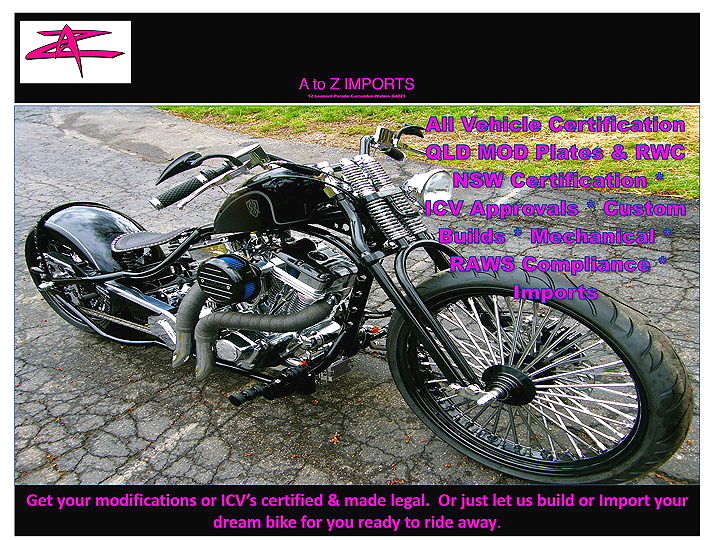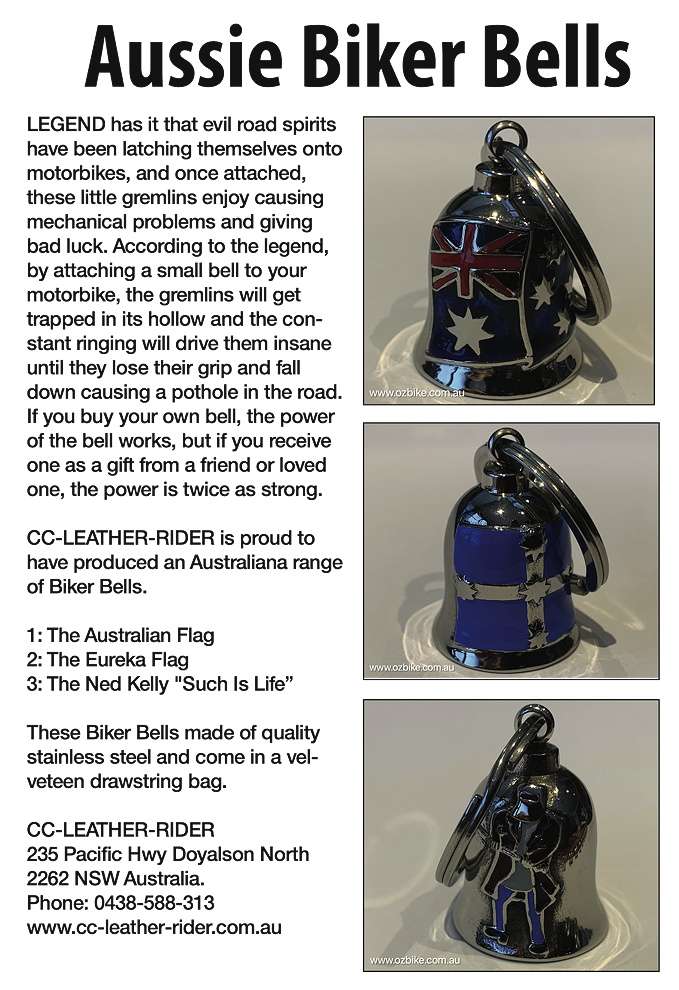Brass Bobber Build Sporty
Tony’s all hand-home-build Sporty bobber is an inspiration to us all.
I REALLY enjoy the mag and the editions with Wasko’s Rock ‘n’ Roller inspired me to build a bobber for myself. I have a couple of Dynas but I really love the bobber look. I could see myself riding one across town to work or to the shops for bread and milk—any excuse to ride it—so I mail-ordered a couple of books, one from Billy Lane and one by Kevin Baas, on building bobbers. After reading them from cover to cover a couple of times, I decided to find a complete donor bike so I would have most of the parts I would need. The frame I decided to design and build myself so it would be a true custom bobber. I have never built a bike before but have a diverse background in fabrication.
I hunted around and found a nice 1995 Sporty with only 18,000 km on the clock at a good price. It was time to start.
I made a template of the motor side view then made several full-size side views of the frame. Using the fork length, wheel diameters and a 30 degrees rake, I came up with a nice low and stretched frame I was happy with. Then I did some top views. At the rear I wanted to kick the frame with two bends to reach the width for the rear wheel because, on the bikes and frames I had looked at, it just looks better than a single bend. I was happy with my drawings so I machined up a neck for the frame that took aftermarket cups and bearings that most aftermarket frames use.
Now it was time to make a jig for the frame. I levelled my welding bench, bottled it to the floor so I couldn’t move, and built a jig on the bench. Before I bent my chrome-moly frame tubing, I made a left-hand-side mock-up frame for a test run. It looked nice so I built a full frame with one-inch heavy-wall chrome-molly.
Once it was all clamped and welded, I dropped in the motor and made all the engine mounts. I then fitted the rear wheel and front-end and lifted it off the bench as a roller.
The rear pulley had been loose on the donor bike so I had to countersink the flogged-out holes in the hub, MIG them up, and then I used a new sprocket as a jig to re-drill the holes. The bike was always going to run a chain so the old belt pulley got diced into the scrap pile.
Next I made the oil bag by hand-beating some domed ends and a piece of six-inch aluminium pipe for the body of the tank; I machined up the filler and return plugs then welded it up. It holds a full four litre bottle of oil.
I have to run a front guard on it to avoid a sticker so I bobbed it front and rear and made it pretty short.
An exhaust was needed next so I cut up the original pipes and two other sets to come up with an upswept two-in-one megaphone which sounds pretty nice. I originally made some chrome heat-shields to keep the heat off the leg but the bike took a change from chrome to brass finish during the build.
I reused the wire loom from the donor bike but cut a lot of shit out—speedo, tacho, idiot lights, etc—for the bare bobber look.
Wasko’s air filter appealed to me but I got a slightly larger one and built an alloy backing manifold which incorporated the breathers and held the carby in place.
To get the nice bobber arse-end, I bought a nice rear guard at a small expense but it makes the bike look as it should. The guard needed rear struts which I made from brass. This look really grew on me so I thought, less chrome and more brass, and this was when the bike’s look really changed. I made blinker struts from brass and used small bullet indicators. All the parts I now wanted that I wasn’t using from the donor bike I made from brass.
The gear-kicker was turned up which gave me the look to make my foot pegs. My mate Kingy came up with an idea for some pegs he wanted made from railway dog-spikes and the jaws from rabbit traps. I made them for him and tested them on the bobber. I followed a similar style and made mine from brass.
Now the chrome heat-shields looked out of place and, yep, brass was the order of the day.
I made a foot brake pedal from brass name-plate from an old safe, a brass master cylinder cover plate, brass head bolt covers and a brass horn cover. I priced some brass dog bones, and after picking myself up off the floor, I designed my own and made them from heavy hex brass.
Next job was the seat so I rolled a seat pan from three-mm plate and got some good quality seat foam out of a wrecked quad bike. I shaped it with an electric knife then finished it with sandpaper to get a nice shape. I got the cover made by an upholsterer.
A fuse box was next. I made it from alloy. It nicely filled in the stretched frame between the oil bag and motor.
Now it was time to strip it down for the tins to be painted and my raw steel frame to be sand-blasted and painted. Drew from Custom Creations painted it for me. I wanted it to look old school but highlight the brass theme.
My daughter Mel had kept a keen eye on the build so I got her to help pick out the colours. We came up with pale blue and off-white but Drew set it off with a hand-painted pinstripe between the two tones and it really highlights the brass. Thanks again Drew.
The oil lines had to be copper to keep with the old look.
I found an old brass lion’s head on an old pot-plant. Leo is my birth sign, so as a finishing touch, I made a points cover with Leo on it.
A mate of mine, Chook, is a pretty good mechanic so he came over and I got him to check I hadn’t fucked anything up. He wound her over a couple of times and she fired into life. He tuned the carby he had re-jetted for me; it sounded sweet and ran the same.
Seeing Mel loved the bobber so much, I gave her a call and asked her if I could take some photos with her on the bike. She couldn’t come around quickly enough.
It took me from early June to mid-December to build my bobber and I should thank my better half, Kerry, for her full support and patience.
Keep up the good work, Ozbike, and all those who make it happen.
TONY KITTEL, Port Lincoln, SA.

















